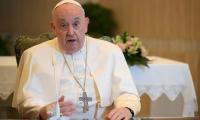The magic number (or the final count) of Karachi’s total population has once again generated controversy as urban planners are estimating it to be around 17.5 million.
The Pakistan Bureau of Statistics (PBS) said on Wednesday that the estimate could or could not be correct as enumeration in Karachi was underway in 11,823 blocks out of total 15,984 blocks.
This figure came after the PBS had earlier shared that 2.924 million households had been listed in the first phase of the census. The Muttahida Qaumi Movement-Pakistan (MQM-P) has rejected the initial census results of Karachi shared by the PBS. Senior party leader Dr Farooq Sattar said on Tuesday that the population of rural Sindh was being overstated in the census, while the population of urban Sindh, especially Karachi, was being reduced.
Addressing a press conference, Sattar said that this time the plan was to show the population of Karachi as 200 million. He claimed the census was being rigged by the enumerators and government employees. He said that over 500 complaints against the census had been received from different city districts. If the population of Karachi were to be counted correctly, the next chief minister would be from the party that won the election from the city, he added.
The MQM-P leader said that on the one hand, the Pakistan Peoples Party had convened an all-party conference on the census by pretending to be a national party, while on the other, it was influencing the PBS data so that the population of interior Sindh could be shown as high as possible.
In the 2017 national census, the city’s population was 16.024 million. Urban planner and geographer Mohammad Toheed, associate director at the Karachi Urban Lab (KUL), calculated that in 2017 the household count of the city was 2.73 million and an average family size was around six. He multiplied the average family size by the current listed households, which are 2.924 million, and got the number of 17.5 million. As per the PBS website, the average household size of Karachi in 2017 was 5.75 persons.
The PBS had conducted door-to-door household listing throughout the country from March 1 to March 10. There was a break on March 11 and March 12, following which the population count kicked off.
Until 3pm on Sunday, Karachi’s enumerated population was 8.6 million. Until 3pm on Sunday, 1.92 million structures had been enumerated in the city, and 2.75 million residential and commercial units had been counted in those structures.
Homeless
In this figure we cannot ignore the homeless population. However, in the 2017 census, the homeless population of Karachi was highly insignificant.
Independent researcher Sadya Siddiqui said the homeless population in Karachi is a sizable segment consisting primarily of migrants that live on street pavements and under the flyovers of the city. According to the Census 2017, the homeless population in Sindh was 14,708 with a mere total of 5,312 people listed as shelter-less in one of the mega cities of the world.
She shared the census 2017 Karachi districts’ breakdown of the homeless population: East 987, Central 989, South 1531, West 1159, Korangi 361 and Malir 285. Back then there were six districts of Karachi when the last census exercise was done.
“There are guesstimates on the number of homeless people in Karachi, ranging anywhere between 20,000 and 500,000, but it could indeed be higher than 500,000, especially in light of the demolition drives that have taken place in the city after the census of 2017,” she said, adding that there has never been a focused government-led survey done to tackle homelessness, which is a clear indicator of urban poverty. “Overall up to 20 million people in Pakistan are estimated to be homeless."
‘Wait for final count’
PBS chief statistician Dr Naeem Uuz Zafar, talking to The News, said these estimates could be wrong or correct as the enumeration is still underway.
Karachi has a total of 15,984 census blocks and each block comprises 200 to 250 houses. “The enumeration is underway in a lot of blocks and we cannot conclude and make a final perspective about the population,” he stressed.
Out of 15,984 blocks, he said, the enumeration of household population is underway in 11,823 blocks, while in 3,882 blocks the enumeration has been completed.
Speaking on the less than one percent household listing that was left in the province, he said, out of the total of 15,984 blocks, the lists has been completed in 15,217 blocks, while in 756 blocks it is in process and 11 blocks are not in the digital zone. Speaking on the reservations of the MQM-Pakistan, he said, the political party has problems with the field operation, which is under the provincial government. He said that the oversight of the enumerators is done by assistant commissioners, who are under the Sindh government.
An aerial view of the commercial district of Karachi. — AFP/FileGoa last night I dreamed...The Canvas Gallery is...
Sindh Energy Minister Syed Nasir Hussain Shah gestures during a meeting on March 19, 2024. —...
Karachi Commissioner Syed Hassan Naqvi chairs a meeting on May 13, 2024. — Facebook@Commissioner Karachi OfficeThe...
In this image the Dawood University of Engineering and Technology Karachi can be seen. — Facebook@Dawood university...
East Range DIG Usman Ghani Siddiqui presides over a meeting at the East DIG office on March 10, 2025. —...
Sindh Chief Minister, Syed Murad Ali Shah addresses a press conference at CM House in Karachi in this undated photo....







